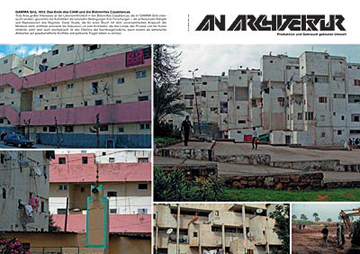For a short time in the 1950s the planning practices of European architects in North Africa and their studies of everyday life in the bidonvilles were of central importance in the CIAM debates about a redefinition of the modern movement. In spite of their great interest in the reality of life in Casablanca’s bidonvilles – as analyzed in the GAMMA grid – the architects ignored the colonial conditions of their research: the repressive nature of the regime as well as the anti-colonial struggles. While opening up a discussion about an architecture that includes the local and thinks about processes and users, this study is also exemplary for the dilemma of post-war modernism, that of giving mainly aesthetic answers to social and political questions.
 |
||
| October 2008 108 p., illustr. b/w, mainly german |
||
Content
GAMMA Grid und Begleittexte:
Grids auf dem 9. CIAM Kongress / Propaganda der kolonialen Modernisierung / Feldforschungen in den Baracken / Die dominante Logik der planerischen Lösung / Hofhaussiedlungen als Übergangslösung / Eine optimistische Architektur der Dringlichkeit / Vertikale Kollektivität / Offene Planung, Aneignung und Varianz
Between Dogon and Bidonville: CIAM, Team 10 and the Rediscovery of African Settlements, Tom Avermaete
Von der Absicht zu Regieren. Ein Gespräch über Bauen, Kolonialismus, Widerstand und die „Wüste der Moderne“. An Architektur mit Marion von Osten und Daniel Weiss
With kind support of Haus der Kulturen der Welt Berlin and École Nationale d`Architecture de Rabat, Phototèque